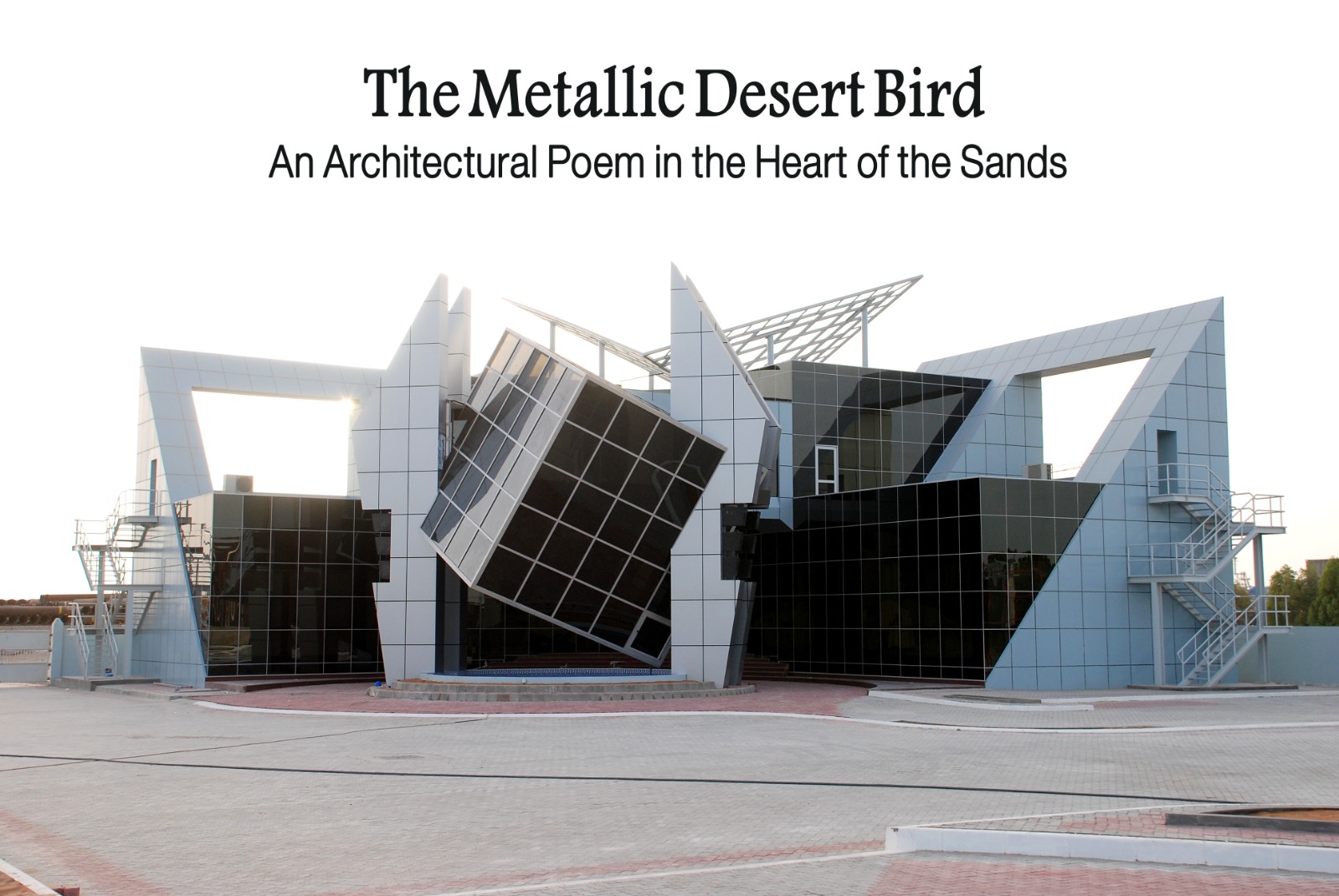An Architectural Poem in the Heart of the Sands
Deep in the desert, where the horizon embraces endless dunes, this administrative building for a construction company rises as an artistic masterpiece, embodying the spirit of a majestic bird soaring freely in an infinite expanse. The design is a poetic sculpture in metal and glass, narrating the intricate dialogue between humanity and nature, between solidity and fluidity, between dreams and reality.
The composition begins with the head an inverted glass cube, partially tilted on one of its edges, as if preparing to take flight towards the sky. This cube serves as the visual and symbolic anchor of the building, its boundless transparency reflecting the essence of leadership and forward vision. Elevated on slender columns, it appears to hover above the ground, enhancing the sensation of lightness and flight. At its core lies the executive office, offering a panoramic view that stretches across the horizon, akin to the keen eye of a bird surveying the world from above.
From one edge of the cube, life flows amidst the arid landscape in the form of a delicate waterfall, cascading seamlessly into a circular basin below. This waterfall serves as a focal point upon entering the building a powerful metaphor for life emerging within the harsh desert, a reminder that beauty can arise even from the most unforgiving environments.
Stepping inside the cube, an elegant glass corridor extends along the first floor, forming the bird s neck that connects the head to the body. Walking through this corridor is a sensory experience, enveloped in light and reflections, evoking the feeling of moving within the essence of the bird itself.
The pathway leading to the building s entrance follows a circular motion, compelling visitors to walk around the glass cube and waterfall, akin to a ceremonial passage into a new realm. This carefully orchestrated approach heightens the sense of grandeur and anticipation, making each step toward the entrance a journey of intrigue and discovery.
On either side of the head, two extended wings unfold in preparation for flight, housing the administrative offices. These spaces are distributed according to their functional needs while maintaining an organic design inspired by the movement of a bird in motion.
At the first-floor level, the wings recede slightly, forming two spacious terraces that offer open-air environments, reinforcing a sense of connection with the surrounding nature. This recess achieves both structural balance and visual lightness, enhancing the overall dynamism of the composition.
Adding a dramatic architectural element, structural bridges intersect the void, designed as hollow triangular frames that serve as emergency exits leading to the stairwells. These elements echo the aesthetic of mechanical wings, resembling the skeletal framework of a bird, reinforcing the architectural narrative.
The building s exterior is clad in gray Alucobond panels and black glass, creating a striking contrast that mirrors the plumage of a bird. These materials embody the duality of nature strength and transparency allowing the structure to interact dynamically with light and shadow, as if it were a living entity.
At the center of the rooftop, a perforated metallic plate in a rhombus shape symbolizes the feathers covering the bird s form, crowning the design with a final touch of refinement and prestige. This plate serves as a defining emblem of the building s identity, a declaration that this bird is not destined to remain grounded but is perpetually poised for flight towards new horizons.
Ultimately, this building stands as an architectural manifesto an expression of ambition, resilience, and adaptation to its environment. It is a masterpiece that, through the language of design, tells the story of a metallic bird unbound by limitations, eternally present in the desert as a landmark in the skyline of architecture.

